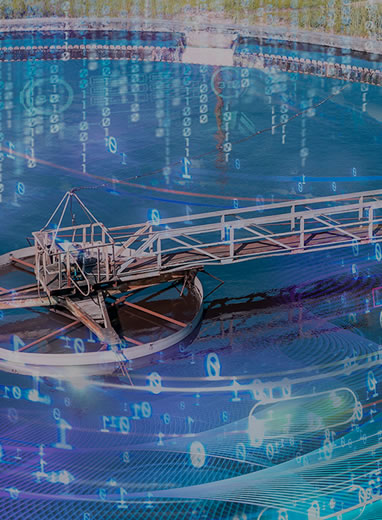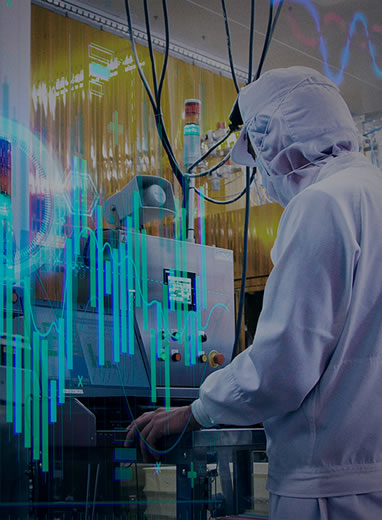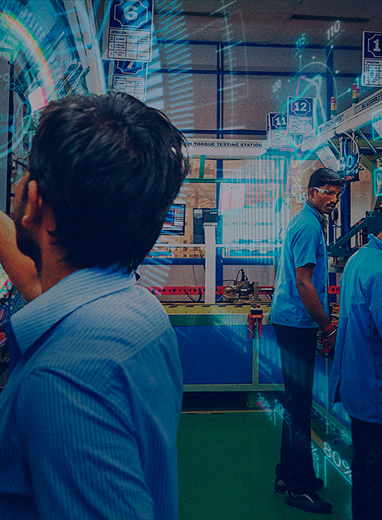Factory Automation
Case study
Preventive
maintenance
enables a
30% cost
reduction
and 365-day
nonstop
operation
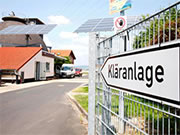
Stadtwerke Rotenburg
Municipal services, Germany
 Background / Issues
Manage service levels, reduce repair time and costs
Background / Issues
Manage service levels, reduce repair time and costs
 Background / Issues
Background / Issues99% of households in Germany are linked to wastewater treatment plants, and are using these essential facilities daily. Wastewater treatment plants are required to purify and circulate wastewater, non-stop, 365 days a year, so that it can be safely returned to rivers and waterways.
However, at the wastewater treatment plant of Germany's public utility company Stadtwerke Rotenburg an der Fulda, failures frequently occurred due to problems with the design. When partial mechanical damage occured, an entire pump needed to be replaced, thereby incurring unplanned costs in addition to the service downtime. In order to protect people's livelihood, it became necessary to find solutions to prevent failures by discovering issues at an early stage.
 Solution
Real-time data analysis and monitoring to discover issues early
Solution
Real-time data analysis and monitoring to discover issues early
 Solution
SolutionAt Stadtwerke Rotenburg a.d. Fulda, a condition monitoring solution was implemented in order to solve failure issues at the wastewater treatment facilities.
Through detailed monitoring and data analysis, we observed vibration changes at an early stage which are normally undetectable by humans. By sending out real-time alerts before the vibrations get to a critical level, maintenance could be scheduled so parts could be replaced prior to failures occurring. By preventing failures, pumps were able to be used with minimum downtime, thereby creating substantial cost reduction. Moreover, a 24-hour nonstop, stable and efficient operation, which is an essential element of public infrastructure, was realized.
 Effect
Successfully maintaining up-time while reducing the cost of failure by 30%
Effect
Successfully maintaining up-time while reducing the cost of failure by 30%
 Effect
EffectRepairs after a failure can cause inestimable costs and extended outages during the repair period, but this monitoring solution enables preventive maintenance to be planned and executed at the optimal time, reducing both cost and down-time. In this particular case, due to the particular failure condition, the repair costs were reduced by 30%.
Moreover, operational efficiency of the plant as a whole was improved by minimizing pump lifecycle costs - such as only replacing worn parts when needed, whereas in the past the pumps entire motor and gearbox needed to be replaced even when the damage was only partial.
 SMKL
Real-time data conversion, analysis and reporting
SMKL
Real-time data conversion, analysis and reporting
 SMKL
SMKLLevel D
Optimize


Making ROI bigger step by step by using SMKL.






Level C
Analyze








Level B
Visualize








Level A
Collect








Level 1
Worker
Level 2
Workplace
Level 3
Factory
Level 4
Supply Chain

“Maturity Model” is a known type of analysis, it also makes the reader think of higher management analysis so is the right way to describe this….because it is actually a maturity model!

Just to make continuous investment is probably a bad business decision but to make that investment sustainable means that it pays for its self and continues to drive value – simply investing continuously does not guarantee benefit – only cost
Predictive maintenance
-
STEP IA2 :Data collecting
-
STEP IIC2 :Analyze/utilize data
(real-time processing of data) -
STEP IIID2 :Optimizing the workplace
To be able to catch failures ahead of time a Condition Monitoring System was implemented. This process began by installing additional vibration sensors to collect operational data which was analyzed in real-time to detect early signs of failure and then send out pre-emptive alerts to maintenance staff. Furthermore, all data was reported back to a remote control center so that further optimization and comparison between multiple pump systems could be made.
 Customer's voice
Smooth implementation while not interrupting normal operation
Customer's voice
Smooth implementation while not interrupting normal operation
 Customer's voice
Customer's voice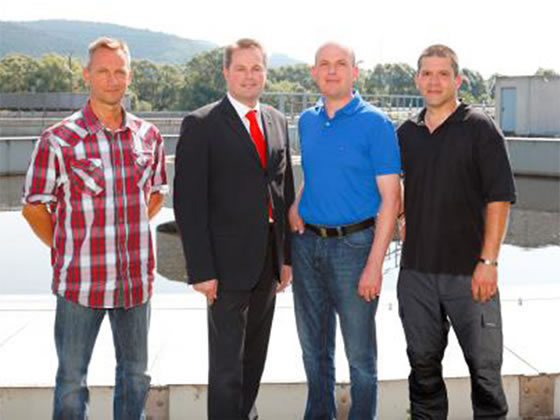
From left, Michael Böttner, Programmer, Willich Elektrotechnik GmbH, Christoph Behler, Senior Business Development Manager, Mitsubishi Electric Europe B.V., Stephan Heckeroth, Operation Manager, Stadtwerke Rotenburg a. d. Fulda, Antonio Genovese, Rotenburg a.d. Fulda's municipal wastewater treatment facility's Wastewater Manager.
Mr. Genovese of Stadtwerke Rotenburg said, "I was surprised and impressed that the implementation was completed without requiring stoppages of even one day of operation. It was as if we didn't notice the system was actually being integrated." He was extremely pleased that the system implementation took place without hindering normal operation.
Michael Böttner, programmer at Willich, the system’s integrator working with Stadtwerke Rotenburg, and who proposed the monitoring system implementation to Rotenburg, said, "Since the test results were so good at Rotenburg, we can easily clarify the solutions benefits when proposing it to customers in the future,".
 Application case
A scalable solution from small to large systems and machines
Application case
A scalable solution from small to large systems and machines
 Application case
Application caseThis monitoring solution can also be implemented on any machine as long as it is motorized. At one of the German paper factories of Mitsubishi HiTec Paper Europe GmbH, a defect in the cooling system of a huge machine standing over four stories high affected the condition of their final product. To solve this issue, we also implemented a condition monitoring solution for the 26 huge cooling fans, each weighing a mere 100kgs. By analyzing various monitored data, from vibration levels to the electrical power consumption of the fan motors, we avoided damage to the machine and were able to plan and implement maintenance in a timely manner. Every day the factory produces over 300,000kg of paper in 9,000kg batches, the solutions return on investment (ROI) in terms of potential lost production was approximately 1 hour of one day production, i.e. the cost of production stopping just 1 hour on one single day was greater than the cost of the total solution which will continue to provide years and years of future protection.
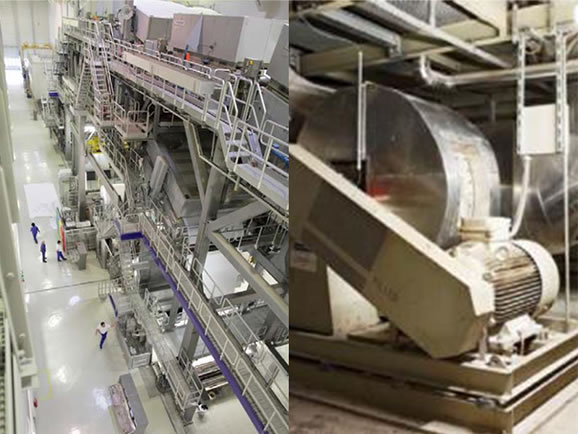
Please inquire with the following for more detailed information about utilizing data to enhance productivity and factory operation ratios by breaking away from processes relying on people.
 Case Studies
We have a remarkable
track record
in a wide
range of industries
around the world.
Case Studies
We have a remarkable
track record
in a wide
range of industries
around the world.
 Case Studies
Case Studies
 SMKL
Smart Manufacturing Kaizen Level (SMKL)
SMKL
Smart Manufacturing Kaizen Level (SMKL)
 SMKL
SMKL

